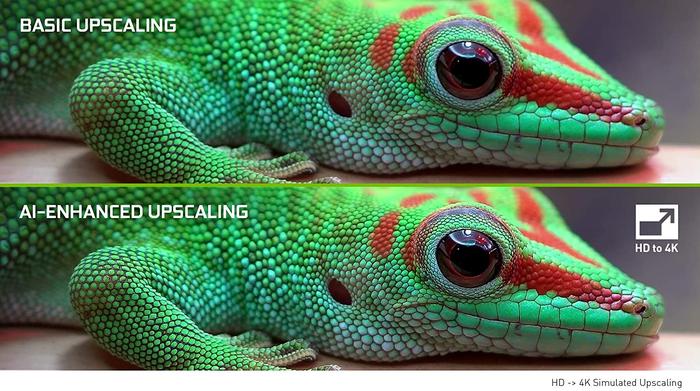mtn328
Member
The Pitch
For as long as it's been available in Australia, the original Nvidia Shield TV has been our go-to alternative to the pricey Apple TV 4K. Powered by Android TV and Nvidia’s own overkill hardware, the streaming box plays nice with basically everything and provides a consistent gateway to your streaming and media content.
In some ways, the original Nvidia Shield TV is everything you’d hope would be considered standard by 2020. Now, it’s got some new competition in the form of its successor: the new Nvidia Shield TV.
Specs
Software: Android 9
Processor: Tegra X1+
RAM: 2GB
4K support: Yes
HDR: Yes, Dolby Vision
Assistant Support: Amazon Alexa and Google Assistant
Ports: Gigabit Ethernet, HDMI 2.0b with HDCP 2.2 and CEC support, MicroSD card
Pack-Ins: Power cable, Ethernet cable
Colors: Black
RRP: $249
Design & Performance
Those who pay the premium for the new Pro-model will get a form-factor that’s more familiar but who opt for the cheaper baseline experience this time around get something closer to a Google ChromeCast than the original Shield TV.
Where the previous model opted for a console-inspired form-factor, the new Nvidia Shield TV opts to look like a metal tube. One end of this cylinder boasts the power inputs. The other presents the rest of the port-folio.

On paper, this new design makes it a little bit easier to push the Nvidia Shield TV out of sight and make the smart part of your home entertainment experience disappear.. Nevertheless, I found it hard to love. Since both ends of the device play host to their respective input and output cables, you can’t really stand the unit vertically. Instead, it has to sit on its side - which leaves it free to roll around your TV cabinet or stand if left unattended.

Still, looks aside, the new Nvidia Shield TV does a decent job of replicating - and often improving - the strengths of the original streaming box. Like that device, the 2019 Shield TV runs on Nvidia’s own internal hardware and the latest version of Android TV. However, this time around, the graphics giant have opted to arm the Shield TV with a more-powerful Tegra X1+ processor.
This internal upgrade nets a few new features. No, the new Shield TV doesn’t support 8K content. But it does support Dolby Vision HDR - which the original Shield TV lacked.
The new Shield TV is also launching with a much beefier roster of streaming services. In addition to staples like Netflix, Amazon Prime Video and Stan, the new streaming hub will also support Disney+, Foxtel, SBS OnDemand and ABC iView.

The other key addition here comes in the form of native AI upscaling that promises to make non-4K content look much better on 4K screens. Depending on your degree of literacy in the display tech space, this will either seem cutting edge or tacky. Regardless, it’s not much of a surprise. The latest front of the home entertainment arms race has been upscaling algorithms and given their experience dealing with machine-learning based tech like DLSS, it’s only natural that Nvidia would look to distinguish themselves from the competition in this specific way.
Helpfully though, you don’t have to just take Nvidia (or anyone selling the new Shield TV) at their word that these algorithms are actually making a difference. Out of the box, the streaming box features a toggle-able split screen mode that lets you visibly see the impact that this AI-trained tech makes in real-time. More products should have this.

If you already own a Shield TV, this AI enhancement is ultimately the only reason to think about upgrading. For all the spec bumps, the experience of actually using the new Shield TV isn’t too different to the old one. I wouldn’t say it was slow but it didn’t feel that much faster than what I had become accustomed to after using the Nvidia Shield TV for most of the last year.
What’s more, after a week or so of messing with it, I’m not convinced when it comes to the AI upscaling here. Comparisons to some of the portrait optimisation tech found in many modern smartphone cameras seemed apt and even the best results have a slightly unsettling sense of the uncanny valley about them.

At worst, moving objects seemed to have strange distortive outlines around them. Most of the time, the details on screen looked a little bit smoother.

Ultimately, whether that difference in opinion that the processor has in what the best image looks like is something you're into it is going to vary from person to person. Regardless, to me, the difference that the new Nvidia Shield’s optimisation tech made was inconsistent and, even in the best circumstances, rarely outright superior in a way that made it feel something I’d want leave enabled throughout regular usage.
For as long as it's been available in Australia, the original Nvidia Shield TV has been our go-to alternative to the pricey Apple TV 4K. Powered by Android TV and Nvidia’s own overkill hardware, the streaming box plays nice with basically everything and provides a consistent gateway to your streaming and media content.
In some ways, the original Nvidia Shield TV is everything you’d hope would be considered standard by 2020. Now, it’s got some new competition in the form of its successor: the new Nvidia Shield TV.
Specs
Software: Android 9
Processor: Tegra X1+
RAM: 2GB
4K support: Yes
HDR: Yes, Dolby Vision
Assistant Support: Amazon Alexa and Google Assistant
Ports: Gigabit Ethernet, HDMI 2.0b with HDCP 2.2 and CEC support, MicroSD card
Pack-Ins: Power cable, Ethernet cable
Colors: Black
RRP: $249
Design & Performance
Those who pay the premium for the new Pro-model will get a form-factor that’s more familiar but who opt for the cheaper baseline experience this time around get something closer to a Google ChromeCast than the original Shield TV.
Where the previous model opted for a console-inspired form-factor, the new Nvidia Shield TV opts to look like a metal tube. One end of this cylinder boasts the power inputs. The other presents the rest of the port-folio.

On paper, this new design makes it a little bit easier to push the Nvidia Shield TV out of sight and make the smart part of your home entertainment experience disappear.. Nevertheless, I found it hard to love. Since both ends of the device play host to their respective input and output cables, you can’t really stand the unit vertically. Instead, it has to sit on its side - which leaves it free to roll around your TV cabinet or stand if left unattended.

Still, looks aside, the new Nvidia Shield TV does a decent job of replicating - and often improving - the strengths of the original streaming box. Like that device, the 2019 Shield TV runs on Nvidia’s own internal hardware and the latest version of Android TV. However, this time around, the graphics giant have opted to arm the Shield TV with a more-powerful Tegra X1+ processor.
This internal upgrade nets a few new features. No, the new Shield TV doesn’t support 8K content. But it does support Dolby Vision HDR - which the original Shield TV lacked.
The new Shield TV is also launching with a much beefier roster of streaming services. In addition to staples like Netflix, Amazon Prime Video and Stan, the new streaming hub will also support Disney+, Foxtel, SBS OnDemand and ABC iView.

The other key addition here comes in the form of native AI upscaling that promises to make non-4K content look much better on 4K screens. Depending on your degree of literacy in the display tech space, this will either seem cutting edge or tacky. Regardless, it’s not much of a surprise. The latest front of the home entertainment arms race has been upscaling algorithms and given their experience dealing with machine-learning based tech like DLSS, it’s only natural that Nvidia would look to distinguish themselves from the competition in this specific way.
Helpfully though, you don’t have to just take Nvidia (or anyone selling the new Shield TV) at their word that these algorithms are actually making a difference. Out of the box, the streaming box features a toggle-able split screen mode that lets you visibly see the impact that this AI-trained tech makes in real-time. More products should have this.

If you already own a Shield TV, this AI enhancement is ultimately the only reason to think about upgrading. For all the spec bumps, the experience of actually using the new Shield TV isn’t too different to the old one. I wouldn’t say it was slow but it didn’t feel that much faster than what I had become accustomed to after using the Nvidia Shield TV for most of the last year.
What’s more, after a week or so of messing with it, I’m not convinced when it comes to the AI upscaling here. Comparisons to some of the portrait optimisation tech found in many modern smartphone cameras seemed apt and even the best results have a slightly unsettling sense of the uncanny valley about them.

At worst, moving objects seemed to have strange distortive outlines around them. Most of the time, the details on screen looked a little bit smoother.

Ultimately, whether that difference in opinion that the processor has in what the best image looks like is something you're into it is going to vary from person to person. Regardless, to me, the difference that the new Nvidia Shield’s optimisation tech made was inconsistent and, even in the best circumstances, rarely outright superior in a way that made it feel something I’d want leave enabled throughout regular usage.



